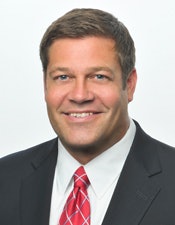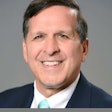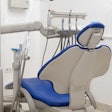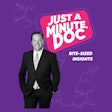
Dental practices have been strongly impacted by the COVID-19 pandemic. When stay-at-home orders went into effect, the ADA advised dentists nationwide to postpone all but urgent and emergency procedures until at least April 30. With this date behind us and states rolling out tailored reopening plans, dental practices have the opportunity to plan their "COVID-19 comeback."
While many dental practices will be able to reopen their physical doors, for patients, there may still be several barriers associated with visiting a dental office, including safety concerns and financial considerations.
Unlike other businesses, dental practices have the unique opportunity to make a timely comeback because they have been rescheduling patient appointments instead of canceling them, have been laying off staff temporarily instead of terminating them, and can potentially make up for lost revenue by working extra hours. Due to this resiliency, there is optimism that COVID-19 is a temporary business disruption and dental practices' still intact goodwill, patient records, staff, and patient demand will allow them to rebound as the pandemic subsides.
While each practice's reopening plan will be specific to the business's needs and location, there are overarching considerations dental practices should keep in mind to help patients feel safe and secure when reentering their practice.
Implementing safety measures
 Dan Croft is head of the Healthcare Practice Solutions Group at TD Bank.
Dan Croft is head of the Healthcare Practice Solutions Group at TD Bank.In this uncertain time and to enable a rapid revenue recovery, dental practices will need to alter procedures in a way that gives patients peace of mind and protects the safety of both patients and staff. This means dental practices should prepare their offices for potential strong patient demand by properly disinfecting and sterilizing reception areas, restrooms, and treatment rooms, following key guidance from organizations like the U.S. Centers for Disease Control and Prevention (CDC), the Occupational Safety and Health Administration (OSHA), and the ADA.
Along with more traditional office activities, dental practices can provide a more hygienic approach to their operations by utilizing digital tools, including online scheduling, adding previsit instructions, implementing a paperless check-in process, and leveraging two-way text messaging to allow patients to check-in remotely from their vehicle and avoid the waiting room.
During this time, there has also been rising concern around the use of cash and credit cards due to their propensity to accumulate germs. To combat this, dental practices can consider pivoting their payment operations to offer mobile payment options so practices can collect funds at the time of service while eliminating the need to touch money, credit cards, or shared devices.
Informing patients of reopening plans and practices
Along with implementing hygienic practices, it is crucial to communicate these changes to enhance patients' peace of mind. This includes providing safety protocol reassurances on the practice's website and through text, email, video, social media posts, and physical postings, listing updated infection control practices for patients and staff. Communicating this information in a transparent manner will help ease patients' anxiety about returning to the practice.
By staying in constant communication with patients, practices can ensure they have the latest contact information on file and can keep patients informed of the practice's reopening plans. As part of this communications strategy, dental practices should let patients know when they are reopening for all necessary patient care, including elective procedures, and make this information readily available through email, text, video, and social media.
It's also important to make personalized calls to discuss prioritizing scheduling to accommodate the specific needs of each patient group while citing both state governor orders and state healthcare society recommendations that it is safe to return to the dental office.
Offering financial flexibility
COVID-19 has led to financial hardship, with the U.S. Bureau of Labor Statistics reporting an unemployment rate of 14.7% as of April 2020. This means that many patients who want to return to their dental practice may have financial concerns about doing so. However, to help dental practices achieve pre-COVID-19 revenue stabilization, practices may need to boost treatment acceptance, increase active patients, and improve access to new patients.
If possible, dental practices should consider offering payment plans, including a membership/subscription program for those patients who need treatment but do not have the insurance or financial ability to pay the bill at the time of service. This can also be accompanied by providing more patient financing, discounting fees, increasing insurance participation, and/or adding new insurance plans so existing and new patients can come into the practice.
Although offering payment plans and new insurance participation may enhance collections, it will often weaken profit margins, so it is important for practices to balance this approach with careful expense control. This could take the form of deferments, reductions, forgiveness, or extensions, if possible, for lease or mortgage payments, supplies, merchandise, lab expenses, salaries, and wages.
With these key patient considerations in mind, dental practices can begin to work through their reopening strategies by asking themselves the following questions:
- What is the practice's key performance goals for the first 30, 60, and 90 days of reopening?
- How does the practice plan to expand hours to take advantage of pent-up demand and make up for some of its lost revenues?
- When will the practice rehire the entire staff and have them cross-trained to ensure that all jobs get done, no matter how busy the office gets?
- What is the practice's potential monthly overhead savings for the next 30 to 90 days and how much revenue does it need to break even?
- Has the practice and its certified public accountant (CPA) planned on the best utilization of its Paycheck Protection Program (PPP) loan to ensure 100% forgiveness?
Dental practices need to invest in systems, processes, and training to hit the ground running after having been partially closed for six to 12 weeks. These holistic plans will enhance efficiency and patient satisfaction, thus developing a strategic approach to reopening so dental practices can begin to rebound and return to the "new normal" in a way that benefits both business operations and patient safety.
Dan Croft has been the head of TD Bank's Healthcare Practice Solutions Group since 2014. In this role, he is responsible for overseeing and growing TD Bank's healthcare practice finance business, which assists dentists, veterinarians, optometrists, physicians, and podiatrists in choosing sound financial solutions for their practices. Croft has more than 20 years of experience.
The comments and observations expressed herein do not necessarily reflect the opinions of DrBicuspid.com, nor should they be construed as an endorsement or admonishment of any particular idea, vendor, or organization.



















